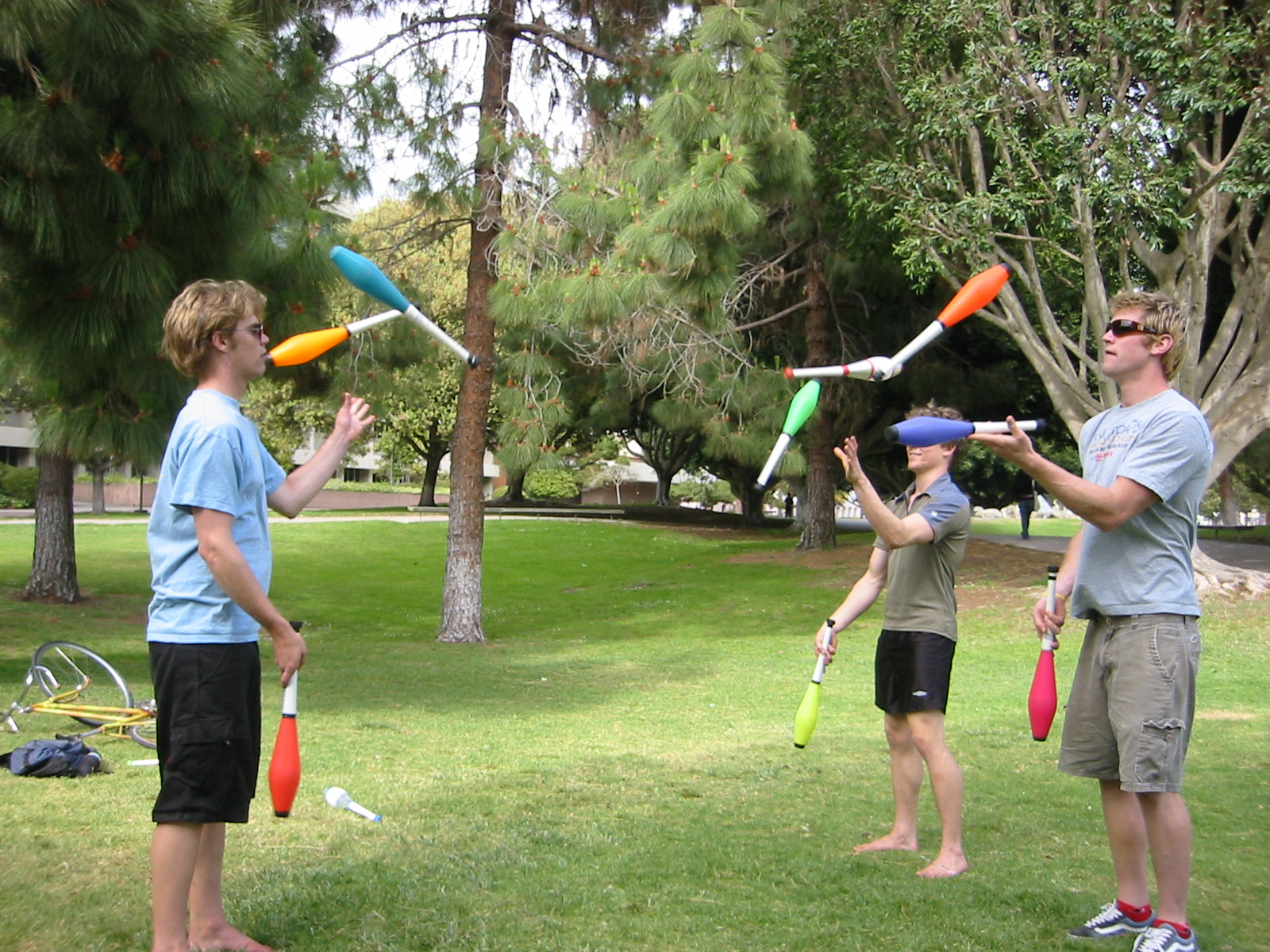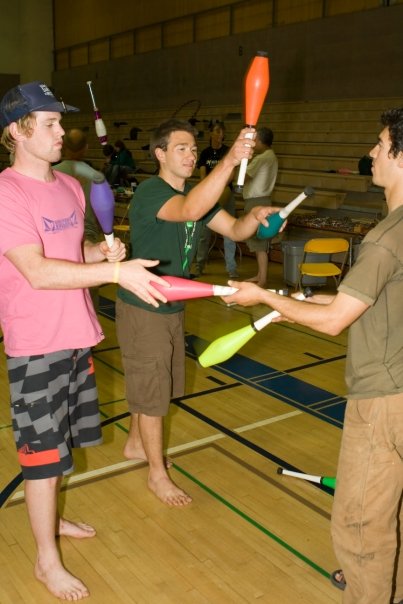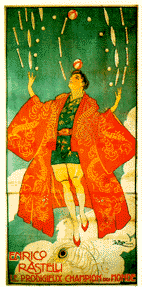We all do it. The Department vies for physical space, staffers “multi-task,” and academics balance teaching, research, and publishing obligations. Ellison Hall’s kinetic “Flying Pencils” sculpture even seems to embody it—“it” being the art of juggling. But, while we’re all familiar with figurative juggling, some of our grads are into the literal form. Ed Pultar and Nate Isbell are into juggling as a sport and practice their skills by juggling clubs on the lawn on the south side of Ellison Hall on a daily basis—if you’d like to have a go yourself, join them. Ed is a semi-pro juggler—he founded the University of Utah’s juggling club and was its president for 6 years while coordinating juggling activities such as Salt Lake 2002 Winter Olympics, Utah Opera, TV shows, university functions, Utah Jazz, music concerts, and elementary schools. Click here for the UCSB Juggling Club web site (and a great video of Edward doing his stuff) and here for details about the yearly Santa Barbara Juggling Festival. The record for solo juggling of clubs, by the way, is 8 clubs for 16 catches by Anthony Gatto who’s currently a professional juggler with Cirque du Soleil (check out his video at www.anthonygatto.com).
The art of jugglery has an ancient pedigree. There are representations of it in the wall paintings of the Egyptian Beni-Hassan tombs on the east bank of the Nile that date back to between 1994 and 1781 B.C., and juggling has been recorded in many other early civilizations. The word itself is derived from the Latin joculator, one who makes a jocus – a game or pleasantry. The Old French form, jongleur, expanded the entertainer/joker connotation to include singing and story telling, and Shakespeare mentions “nimble jugglers that deceive the eye” in his Comedy of Errors. Today, the literal term is generally restricted to a certain kind of skill involving dexterity at throwing and catching objects.
“My grandmother was a Jewish juggler: She used to worry about six things at once” (Richard Lewis). Lewis’ joke is a reminder that figurative juggling is often associated with stress. “To juggle hours of homework and extracurricular activities, many top students sleep less than five hours a night and rely on caffeine or, in some extreme cases, amphetamines to stay awake. They suffer from migraines, ulcers, anxiety and depression, problems they bring with them to college. The current dean of admissions at the Massachusetts Institute of Technology calls academic stress ‘a national health epidemic’” (Stanford University, School of Education). In other words, you can only juggle so much, academically or otherwise.
Like most things geographic, the number of things you can juggle without “crashing” can be modeled. “Let N be the number of objects being juggled, T be the “throw time,” that is, the time (in seconds) that a single object spends in the air between when it’s thrown and when it’s caught, and D be the “dwell time,” that is, the time a single object spends in the hand between when it’s caught and when it’s thrown. By definition, D+T is the total amount of time between when an object is thrown once and when it’s thrown again. In that time, all N objects must have been caught and thrown, to get back to the first one again. Therefore, the amount of time you have to deal with each catch is (D+T)/N, and inverting this gives the number of catches per second as N/(D+T). Since you have two hands, this means that the catches per second per hand is N/(2(D+T)). Let B equal “between time,” that is, the time a hand spends empty between throwing one object and catching the next. The time between catches of adjacent objects into a hand must be B+D, so the number of catches per second per hand is 1/(B+D). Equating the two expressions for catches per second per hand and solving for N gives N=2(D+T)/(D+B), which shows how many objects can be juggled for any given combination of throw times, dwell times, and between times. Define the “throw-dwell” ratio as T/D. T/D is the amount of time a ball spends in the air relative to the time it spends in a hand. Any numbers juggler knows that adding more objects to a pattern requires throwing higher (increasing T), throwing faster (decreasing D), or both. Either way, increasing N requires increasing T/D. Since B is greater than 0, the above formula can be rewritten in terms of the throw-dwell ratio as (T/D)>(N/2)-1. This describes the minimum throw-dwell ratio required for juggling N objects. By measuring a juggler’s maximum throw-dwell ratio, this formula determines the greatest number of objects a person could possibly juggle” (http://www.juggling.org/jw/87/4/academic.html). So now you know…
Of course, all the above begs the question of how juggling is done. Evidently, many juggling patterns can be depicted using a notation called “siteswap” which can be computer-simulated, but I suspect that you’d be a lot better off taking lessons from Ed and Nate first! I’d go into more detail, but I only work 25% time as department editor—it’s called “multi-tasking.”
(Article inspired by Prof. Kostas Goulias and written by Bill Norrington)







.jpg)

